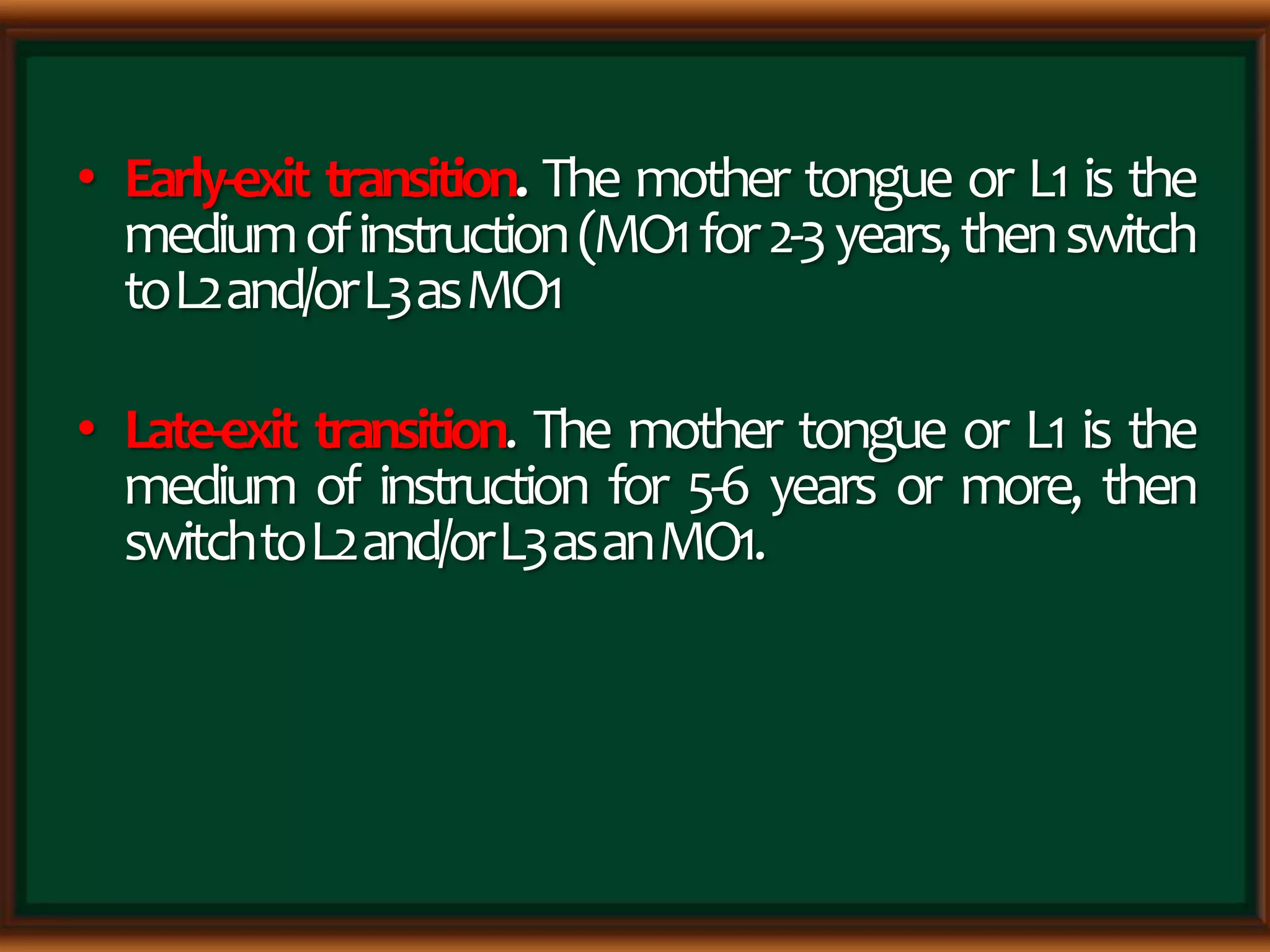This document discusses concepts related to bridging between languages and multilingual education. It defines key terms like mother tongue, second language, early-exit and late-exit transition programs. The document also summarizes research that shows the benefits of mother tongue-based multilingual education (MTBMLE), which includes students developing stronger academic skills when initially taught in their first language before transitioning to additional languages. MTBMLE programs support students' language development, academic achievement, and socio-cultural growth.






























